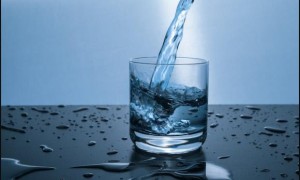Entry overview: The nipple, also known as the nipple, is a cylindrical part of the central protrusion of the mammalian breast, which is harder than the areola and breast. is part of the breast structure. Human female nipples are important erogenous zones and have breastfeeding functions. The nipple is made up of tight smooth muscle and connective tissue. The smooth muscle is arranged in a circular or radial pattern. When encountering sexual or mechanical stimulation, the smooth muscle contracts, which can make the nipple harden and bulge. The nipple is the most important part of the whole breast tissue, and the proper appearance of the nipple can also bring out the beauty of the plump breasts.

Basic Information
Chinese name: Nipples
Foreign name: nipple
Aliases: nipple
Explanation: part of the breast structure
Diameter: 0.8~1.5cm
Location: areola plane
Color: pink or brown
basic introduction
nipple sickness
sunken nipples
Introduction
The normal nipple is cylindrical and protrudes about 1.5-2 cm from the plane of the breast, showing a nodular shape. If the nipple is not higher than the breast skin, and the pulling is not higher, it is called nipple retraction. Sunken nipples are not uncommon among girls before marriage, and they have no effect on their health. Of course, they can get married, have children, and build a happy family. Although sunken nipples are not a serious disease, if they cannot be corrected in time, they will often leave hidden dangers to the health of lactating mothers and babies, which should not be taken lightly.
Classification
Nipple depression can be divided into two types: congenital and acquired. Congenital malformations of nipple development; acquired ones are mostly due to prematurely wearing a bra during puberty or wearing a bra that is too tight, and the nipple cannot develop due to tightening and compression, and even cause atrophy. Inflammatory contractures can also cause sunken nipples.
There are three types of nipple depression: true nipple depression, inverted nipple, and false nipple depression. If the nipple is sunk under the breast, and the pulling is not higher than the old, it is a true nipple depression; if the nipple is turned inward and cannot be pulled out, it is also called nipple inversion; if it is on the same plane as the breast skin, it is called nipple inversion. Flat nipples, also known as pseudo-recessed nipples. The above several types of nipple depression are due to the dysplasia of the smooth muscles of the nipple and areola, and the short mammary ducts in the nipple, resulting in the nipple not protruding.
The nipple is a part of the breast structure. There are many mammary vesicles in the breast, and each mammary vesicle has a mammary duct opening in the nipple. In postpartum women, milk secreted from the vesicles of the mammary glands can drip through the mammary ducts to the nipples. In girls, the nipples are raised alone before puberty. After that, the nipples and breasts bulge in a small hill. with further enlargement of the breast, the nipple and areola bulge out of the breast contour. At the mature stage, the nipples of most people are raised. The nipples of unmarried women and nulliparous women are both small. only after pregnancy, the breasts and nipples are affected by the action of estrogen and progesterone in pregnant women, and the breast vesicles and ducts proliferate, and the nipples gradually increase and become more convex. Get ready to feed your baby.
The normal nipple is conical, about 1.5-2 cm above the plane of the breast peak. Sunken nipples are not uncommon among girls before marriage, and they have no effect on their health. Of course, they can get married, have children, and build a happy family. Although sunken nipples are not a serious disease, if they cannot be corrected in time, they will often leave hidden dangers to the health of lactating mothers and babies, which should not be taken lightly. Nipple depression can be divided into two types: congenital and acquired. Congenital malformations of nipple development; acquired ones are mostly due to prematurely wearing a bra during puberty or wearing a bra that is too tight, and the nipple cannot develop due to tightening and compression, and even cause atrophy. Inflammatory contractures can also cause sunken nipples.
There are three types of nipple depression: true nipple depression, inverted nipple, and false nipple depression. If the nipple is sunk under the breast, and the pulling is not higher than the old, it is the nipple depression; if the nipple is turned inward and cannot be pulled out, it is also called nipple inversion; if it is on the same plane as the breast skin, it is called nipple inversion. For flat nipples, also known as pseudo nipple depression. The above several types of nipple depression are due to the dysplasia of the smooth muscles of the nipple and areola, and the short mammary ducts in the nipple, resulting in the nipple not protruding.
The main hazards of nipple depression are as follows:
First, the nipples are deeply embedded in the skin of the areola, the local dimples cannot be washed for a long time, the secretions and pollutants cannot be removed, and the odor can easily lead to inflammation of the nipple and areola, and even bleeding and erosion, resulting in chronic inflammation;
The second is that the nipple cannot be exposed, the mother cannot breastfeed, and the baby cannot express milk, thus affecting the development of the baby;
Third, the poor discharge of maternal milk will lead to blockage of milk ducts, milk stasis, and prone to acute mastitis and breast abscesses. If the mother never breastfeeds, it can also increase the chance of breast cancer. Fourth, the sunken nipple is harmful to women's chest fitness. , loses its proper curve. Therefore, nipple depression needs to be actively prevented and treated.
Girls should wear a bra of the right size according to the size of the breasts to ensure that the nipples can develop well. You can open a hole at the front end of the bra, which is equivalent to the corresponding part of the nipple, and put on the bra just to squeeze out the inverted nipple. Recessed nipples can be corrected, and the timing of correction should be prenatal.
Mild nipple depression can be treated conservatively first. Wash twice a day with lukewarm water, and then gently pull the inverted nipple outwards. Do not use excessive force when pulling, so as not to damage the nipple. You can also gently pull the nipple outward when you are wiping it in the bath, and pull it repeatedly to make the nipple protrude. If you can't pull it out, put your thumbs on both sides of the nipple and push it back and forth, 3 times a day, 5 times up and down, left and right each time. After marriage, the husband can suck his wife's inward nipples. this kind of sucking can not only correct the inverted nipple, but also prevent breast inflammation, of course, it can also make the sex life of husband and wife more harmonious.
If the inverted nipple is not corrected before delivery, a glass eye drop bottle can be used, the thick end is buckled at the nipple, the thin end is covered with a rubber tube and connected to a syringe, the air in the bottle is drawn out to make it negative pressure, and the nipple is sucked out for a few times. take it off after a few minutes, and then pull it by hand to make it no longer retract. This method can be repeated as necessary.
You can also use a 5ml or 10ml syringe to withdraw the inner plug, reversely connect it to an electric suction device, and use a negative pressure of 400-500 mm Hg to suction the nipple. Treatment is once a day. Repeated suction, 20 days is a course of treatment. Some slightly sunken nipples stick out. Severe nipple retraction requires plastic surgery to correct. Under local anesthesia, a few small pieces of diamond-shaped skin in the areola are excised, and the fibrous tissue and smooth muscle that pull the nipple invaginate are cut off, and the nipple is erected before ligation and suture. The sutures were removed 7 days after the operation, and then suction therapy was performed for 1 to 2 weeks to prevent recurrence.
4 major hazards
1. The nipple is deeply embedded in the skin of the areola, the local dimples cannot be washed for a long time, the secretions and pollutants cannot be removed, and the odor can easily lead to inflammation of the nipple and areola, and even bleeding and erosion, resulting in chronic inflammation;
2. The nipple cannot be exposed, the mother cannot breastfeed, and the baby cannot express milk, thus affecting the development of the baby;
3. Poor discharge of maternal milk will lead to blockage of milk ducts, milk stasis, and prone to acute mastitis and breast abscesses. If the mother never breastfeeds, it can also increase the chance of breast cancer;
4. The sunken nipple is detrimental to the fitness of the female breast and loses the proper curve.
Prevention method
Girls should wear a bra of the right size according to the size of the breasts to ensure that the nipples can develop well. You can open a hole at the front end of the bra, which is equivalent to the corresponding part of the nipple, and put on the bra just to squeeze out the inverted nipple.
long nipples
Introduction
Excessive nipples are one of the common problems of female breasts. They often appear after giving birth, due to breastfeeding and other problems that make the nipples grow longer; it also appears before giving birth, often due to excessive secretion of hormones in the body. Excessive nipples can seriously affect the appearance of women's breasts.
treatment method
Nipple reduction surgery is for the shortening of long nipples, the narrowing of nipples that are too thick, the correction of sagging nipples, and the correction of unsmooth nipples and bilateral asymmetry, etc. The operation is performed under local anesthesia. The incision is made on the circumference of the nipple base or on the nipple cylinder to remove excess nipple tissue, then sutured, and the sutures are removed after 7-8 days after surgery with only gauze coverage.
Manual traction: squeeze the nipple out of the skin by yourself, pinch the nipple horizontally or vertically with the thumb and index finger, and pull the nipple outward continuously or intermittently for about 30 minutes each time, alternately on both sides of the nipple. 3-5 times a day.
Equipment traction: that is, through the manual or electric breast pump, using the principle of negative pressure, the nipple is sucked out, and the nipple is also sucked and pulled continuously or intermittently, 30 minutes each time, alternately on both sides, 3-5 times a day. The above two correction methods, after two months, can receive better results.
Irreversible nipple retraction, also known as severe nipple retraction, can only be corrected by surgery. The operation is to completely release the retracted muscle fiber bundles, and the surrounding tissue is filled under the nipple to enhance the support force of the nipple, make the nipple protrude, and reshape. The operation is generally performed under local anesthesia, and there are various types of operation, which can be selected according to the specific situation and purpose. The operation is all performed within the areola. The sensory nerves of the nipple, so postoperative, will not hinder the normal feeling of the nipple. Surgery generally does not destroy the mammary ducts, so it does not cause breastfeeding disorders.
Pathological changes in color
1. After the color of the nipple is deepened, accompanied by itching around the double nipple and areola, the breast examination can find that there are proliferative lesions or cystic hyperplasia lesions in the bilateral or unilateral breasts. The darkening of the nipple and areola indicates that the level of estrogen in the body is increased, and it is in line with the regularity of the incidence of breast lesions as the target organ.
2. The color of the nipple is simply deepened, becoming dark brown or dark brown, and even small nodules around the areola glands can be found to form protrusions. At this time, there are no lesions in the breasts. It should be considered whether the patient has more serious liver disease? This is because
Liver function declines due to liver disease, and estrogen cannot be properly eliminated in the liver, resulting in darkening of the nipple and areola.
3. The female ovary is suffering from some kind of benign tumor, which increases the amount of estrogen secreted by the ovary, which can lead to the darkening of the nipple color. such patients should seek medical attention as soon as possible in gynecology, identify the cause, and treat in time.
Women should pay attention to the changes in nipple color during breast examination. It is necessary to find out whether the changes in the color of the nipple and areola are physiological or pathological, and make a clear diagnosis and active treatment according to the changes.
Staged development of nipples
1. In girls before puberty, the nipples will be raised alone. After that, the nipples and breasts bulge in a small hill. With further enlargement of the breast, the nipple and areola bulge out of the breast contour.
2. When the nipples reach the mature stage, the nipples of most people are raised outside. The nipples of unmarried women and nulliparous women are both small. only after pregnancy, the breasts and nipples are affected by the action of estrogen and progesterone in pregnant women, and the breast vesicles and ducts proliferate, and the nipples gradually increase and become more convex. Get ready to feed your baby. The normal nipple is conical, about 1.5-2 cm above the plane of the breast peak.







